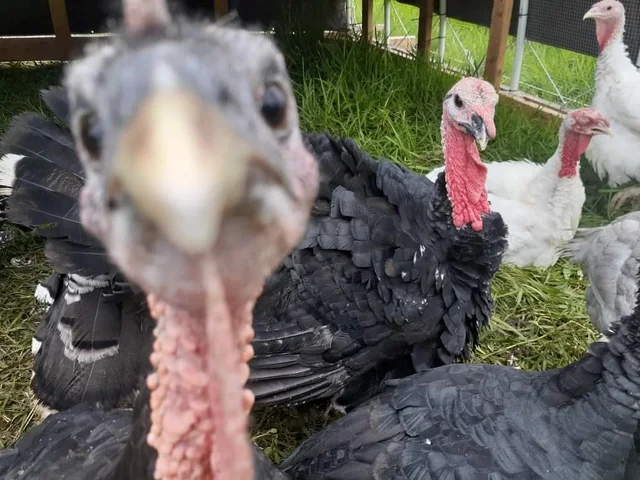Gobbler Intel: A Turkey Hunter’s Guide to Using Trail Cameras

By Derrick R. Stallings-HuntingOfficer.com
Hey there, fellow turkey hunters! 🦃
If you’re like me, you’re always looking for ways to up your game and get a leg up on those wily gobblers. One tool that’s become indispensable in my turkey hunting arsenal is the trail camera. While traditionally used for deer scouting, trail cameras can provide invaluable insights into turkey behavior, helping you pattern birds and make more informed hunting decisions.
In this comprehensive guide, we’ll delve into the best practices for using trail cameras specifically for turkey hunting. From optimal placement to camera settings and data analysis, we’ve got you covered.
Why Use Trail Cameras for Turkey Hunting?
Trail cameras offer several advantages when scouting for turkeys:
- Patterning Behavior: Turkeys are creatures of habit. Cameras can help identify daily routines, such as feeding times, travel routes, and strutting zones.
- Minimizing Disturbance: By monitoring turkey activity remotely, you reduce the risk of spooking birds with frequent in-person scouting.
- Real-Time Intel: Especially with cellular trail cameras, you can receive immediate updates on turkey movements, allowing for timely hunting decisions.
Optimal Camera Placement
Proper placement is crucial for capturing useful data. Here are key locations to consider:
1. Feeding Areas
Turkeys often frequent open fields, food plots, and agricultural areas in search of food. Position cameras to monitor:
- Field Edges: Turkeys tend to enter and exit fields at consistent points. Placing cameras here can reveal patterns.
- Short Vegetation Zones: Turkeys prefer areas with shorter vegetation for better visibility and easier foraging.
- Livestock Pastures: Turkeys are known to follow cattle, feeding on insects stirred up by livestock activity.
Source: Realtree Camo
2. Roosting Sites
Identifying roosting areas can be a game-changer. Look for:
- Tall Trees with Droppings: Concentrations of droppings beneath tall trees can indicate roosting spots.
- Landing Zones: Open areas near roosts where turkeys land after flying down in the morning.
Source: Moultrie Products
3. Travel Corridors
Turkeys use specific paths to move between roosting and feeding areas. Monitor:
- Logging Roads and Trails: These often serve as travel routes.
- Ridges and Creek Beds: Natural pathways that turkeys use for movement.
Source: MidWest Outdoors
4. Strut Zones
Gobblers often return to the same areas to display for hens. Identify these zones by:
- Drag Marks: Signs of wing tips dragging on the ground.
- Openings in Timber: Small clearings where gobblers can strut visibly.
Source: Project Upland Magazine
5. Dusting and Loafing Areas
Turkeys dust themselves to remove parasites and often loaf in shaded areas during midday. Look for:
- Dust Bowls: Shallow depressions with loose soil.
- Shady Spots: Areas under tree canopies or near water sources.
Source: DeerLab
Camera Setup and Settings
To maximize the effectiveness of your trail cameras:
- Height: Mount cameras 1.5 to 2 feet off the ground to capture turkeys effectively.
- Angle: Ensure the camera is angled slightly downward to cover the desired area.
- Mode:
- Time-Lapse Mode: Useful for monitoring large open areas. Set intervals (e.g., every 10 minutes) during peak activity times.
- Motion Detection: Ideal for trails and confined spaces.
- Video Mode: Provides insights into behavior and flock dynamics.
Source: Outdoor Life
- Settings:
- Short Delay: Set minimal delay between shots to capture entire flocks.
- Multi-Shot/Burst Mode: Increases chances of capturing fast-moving turkeys.
Source: Field & Stream
Data Analysis and Patterning
After collecting images and videos:
- Identify Patterns: Note times of day when turkeys are most active in specific areas.
- Track Movement: Observe entry and exit points to fields or feeding areas.
- Assess Flock Composition: Determine the number of gobblers, hens, and jakes.
- Adjust Strategies: Use insights to decide on hunting locations and times.
Source: Banks Outdoors
Legal and Ethical Considerations
Before deploying trail cameras:
- Check Regulations: Ensure trail camera use is legal in your hunting area.
- Respect Privacy: Avoid placing cameras on private property without permission.
- Minimize Disturbance: Limit visits to camera sites to reduce human scent and disturbance.
Final Thoughts
Incorporating trail cameras into your turkey hunting strategy can provide a wealth of information, leading to more successful hunts. By understanding turkey behavior through the lens of your trail camera, you can make informed decisions and increase your chances of bagging that elusive gobbler.
Happy hunting, and may your trail cameras be ever in your favor!
*AI was used to help create this post
Discover more from HuntingOfficer
Subscribe to get the latest posts sent to your email.
